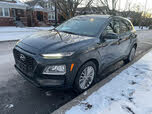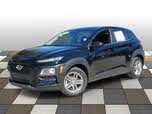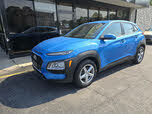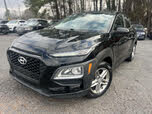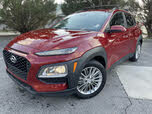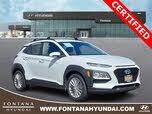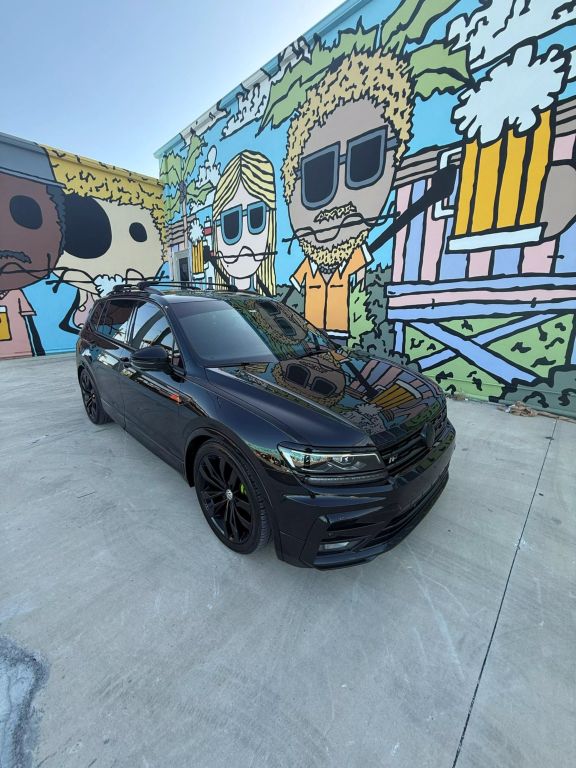2021 Hyundai Kona vs 2021 Volkswagen Tiguan
Overview | ||
MSRP | $20,500 | $25,245 |
Average price | $17,799 | $20,182 |
Listings | ||
Ratings & Reviews | ||
User reviews | ||
Expert reviews | 7.2 out of 10Read full review | 7.3 out of 10Read full review |
Pros & cons | Pros
| Pros
|
Summary | After three years on the market, the Hyundai Kona continues to wow with great features, strong styling, and decent specs. The 2021 model year brings subtle changes to the Kona lineup, including new colors, a new Night Edition with Rays semi-gloss black 18-inch wheels, and gloss black exterior and interior accents. Hyundai offers the Kona in several trims: SE, SEL, SEL Plus, Night Edition, Limited, and Ultimate. A Hyundai Kona Electric model is available as well, but we'll cover that in a separate overview. A high-performance Kona N will be available for the 2022 model year. The Hyundai Kona competes with subcompact SUVs that include the Kia Soul, Volkswagen Taos, Mazda CX-30, Subaru Crosstrek, Nissan Kicks, Hyundai Venue, and Toyota C-HR. Given its size and price, buyers may also cross-shop the larger Hyundai Tucson. New car buyers have many other choices, then, but the Kona still stands out as a value-forward crossover with a long warranty and plenty of standard features. | You may have noticed that crossover SUVs are popular. Among them, compact models dominate, having essentially replaced the traditional midsize sedan in American driveways. Offering room for five people, available all-wheel drive (AWD), and more cargo than any family car, they are the preferred method of transportation for a broad cross section of new vehicle buyers. But that’s not the only explanation for the runaway success of the 2021 Volkswagen Tiguan. |
Video | No video found | No video found |
Popular Features & Specs | ||
Engine | 2.0L 147 hp I4 | 2.0L 184 hp I4 |
Drive Train | FWD | FWD |
Seating Capacity | 5 | 7 |
Horsepower | 147 hp @ 6200 rpm | 184 hp @ 4400 rpm |
MPG City | 27 | 23 |
MPG Highway | 33 | 29 |
Engine | ||
Engine Name | 2.0L 147 hp I4 | 2.0L 184 hp I4 |
Torque | 132 lb-ft @ 4500 rpm | 221 lb-ft @ 1600 rpm |
Horsepower | 147 hp @ 6200 rpm | 184 hp @ 4400 rpm |
Drivetrain | FWD | FWD |
Fuel Economy | ||
MPG City | 27 | 23 |
MPG Highway | 33 | 29 |
Interior | ||
Seating Capacity | 5 | 7 |
Safety | ||
Front Crash Overall | 5 | 4 |
Side Crash Overall | 5 | 5 |
Dimensions & Capacity | ||
Cargo Space | 19.2 cu ft | 12.0 cu ft |
Curb Weight | 2890 lbs | 3735 lbs |
Height | 61.0 in | 66.3 in |
Length | 164.0 in | 185.1 in |
Width | 70.9 in | 72.4 in |
Wheelbase | 102.4 in | 109.8 in |
Maximum Payload | 1089 lbs | 1146 lbs |
Number of doors | 4 | 4 |
Maximum Towing Capacity | 1500 lbs | |
The 2021 Hyundai Kona was a funky small SUV that blended mild and wild styling. Its front grille was flanked by lighting features, with additional lights above and fog lights below on some trims. This busy, playful look targeted younger buyers. The rear design was more subdued, featuring a standard crossover shape and lighting configuration. Inside, the Kona maintained a fun attitude without being too whimsical. The seats had neat patterns and standard cloth upholstery, with higher trims offering leather upgrades. The interior was well-organized, with a high-mounted infotainment touchscreen and physical climate controls, making the layout simple and intuitive.
In contrast, the 2021 Volkswagen Tiguan had clean lines and balanced proportions, offering a conservative, upscale, and timeless aesthetic. It was large for its class, nearly as spacious inside as a Hyundai Santa Fe or Kia Sorento. The Tiguan's upsizing resulted in a roomy interior with ample space for four people, and an optional third-row seat expanded capacity to seven, though it was best suited for children. The interior featured modern geometric forms and a no-nonsense control layout, with shiny detailing, digital instrumentation, and a flush touchscreen display. However, it had too much hard plastic to be mistaken for an Audi, and the steering wheel stalks felt flimsy.
The 2021 Hyundai Kona offered two powertrain options. The base model had a 2.0-liter four-cylinder engine producing 147 horsepower and 132 pound-feet of torque, paired with a six-speed automatic transmission. The optional turbocharged 1.6-liter engine delivered 195 horsepower and 195 pound-feet of torque, mated to a seven-speed dual-clutch automatic transmission. Front-wheel drive was standard, with all-wheel drive available for a $1,400 upcharge. While neither engine was particularly powerful, both provided ample power for city and highway driving. The Kona handled confidently, feeling agile and engaging, with a balance of comfort and composure on curvy roads. Fuel economy varied, with the base engine and FWD returning 27/33/30 mpg city/highway/combined, and the turbo engine with AWD achieving 26/29/27 mpg.
The 2021 Volkswagen Tiguan featured a turbocharged 2.0-liter four-cylinder engine generating 184 horsepower at 4,360 rpm and 221 pound-feet of torque at 1,600 rpm. An eight-speed automatic transmission sent power to the front wheels by default, with 4Motion AWD available for $1,400 on most models and standard on the SEL Premium R-Line. The powertrain was adequate but suffered from turbo lag, making the engine feel breathless during passing or acceleration. The Tiguan's nearly 4,000-pound curb weight contributed to this perception. The EPA rated the Tiguan at 25 mpg combined with FWD and 24 mpg with AWD, though real-world testing showed 22.6 mpg with AWD. Despite its powertrain shortcomings, the Tiguan offered a pleasurable driving experience with light, responsive steering, a compliant ride, and nimble handling, though it struggled over sharp bumps and railroad tracks. It was quiet and composed on the highway, making long trips enjoyable.
The 2021 Hyundai Kona provided decent headroom and legroom for front-seat passengers, with controls and displays within easy reach. The front seats were wide and well-padded but lacked support for spirited driving. Back-seat passengers had good headroom but limited legroom. The large rear door openings facilitated loading and unloading children, though large rear-facing car seats could be problematic for taller front passengers. The Kona's cargo space was limited, ranking near the bottom of its segment, though the rear seats folded to expand the space. Small-item storage was generous, with large door pockets and a spacious center console.
The 2021 Volkswagen Tiguan prioritized comfort, with large doors and tall seating hip points for easy entry and exit. The front seats offered a wide range of adjustments, excellent support, and visibility. The V-Tex leatherette upholstery mimicked real leather, and the dual-zone climate control was effective. The back seat provided generous legroom, foot space, and occupant support, with air conditioning vents and USB charging ports. The Tiguan accommodated reverse-facing child safety seats well. Storage space was limited, with a tricky slot for the wireless smartphone charger. The 40/20/40-split folding rear seat allowed for carrying long items and four passengers simultaneously. Cargo volume varied from 33 to 37.6 cubic feet behind the second row, depending on the presence of the third-row seat, with a maximum capacity of 65.7 to 73.5 cubic feet.
The 2021 Hyundai Kona came equipped with an eight-inch infotainment touchscreen, Bluetooth, six speakers, wireless Apple CarPlay and Android Auto, and USB inputs. Available tech included SiriusXM radio, navigation, wireless device charging, a Harman Kardon audio system, and a 10.25-inch touchscreen. The infotainment software was simple, colorful, and responsive, making it easy to navigate and access features without multiple clicks. Wireless Apple CarPlay and Android Auto were significant benefits, especially for lower trims.
The 2021 Volkswagen Tiguan introduced the MIB3 infotainment system starting with the SE trim, featuring an eight-inch touchscreen, faster processing, and expanded features. Highlights included wireless Apple CarPlay and Android Auto, WiFi for up to four devices, SiriusXM 360L satellite radio, Amazon Alexa compatibility, and Car-Net connected services. The MIB3 system was an improvement but had quirks, and the voice recognition technology was lacking. The standard six-speaker sound system struggled with bass-heavy music, while the SEL Premium R-Line's nine-speaker Fender audio system performed better. The SEL and SEL Premium R-Line featured Volkswagen Digital Cockpit instrumentation, offering an understated approach to technology and information display.
The 2021 Hyundai Kona earned a Top Safety Pick from the IIHS with "Good" scores in all crash test areas and a five-star overall rating from the NHTSA. Standard safety features included forward-collision warning, pedestrian detection, lane-keeping assist, lane-following assist, automatic emergency braking, adaptive cruise control, a driver attention warning system, and rear occupant alert. Optional features included blind-spot monitoring, rear cross-traffic alert, a head-up display, and parking sensors.
The 2021 Volkswagen Tiguan came with the IQ Drive collection of advanced driving assistance systems, including forward-collision warning, pedestrian detection, automatic emergency braking, blind-spot monitoring, and rear cross-traffic alert. The SE trim added adaptive cruise control, the SEL included lane-departure warning with lane-keep assist, and the SEL Premium R-Line featured automatic high-beam headlights. The adaptive cruise control was smooth but slow to react to changing traffic conditions. Lane-keep assist was effective but inconsistent. The blind-spot warning indicator was easy to see, and the parking sensors were helpful but could be overly sensitive. The standard reversing camera provided a clear view, with a top-down surround-view available on the SEL Premium R-Line. Car-Net connected services offered numerous safety features, including automatic collision notification and Family Guardian alerts. The IIHS awarded the Tiguan a Top Safety Pick rating for the SEL and SEL Premium R-Line trims, while the NHTSA had not published complete crash-test results.
CarGurus highlights
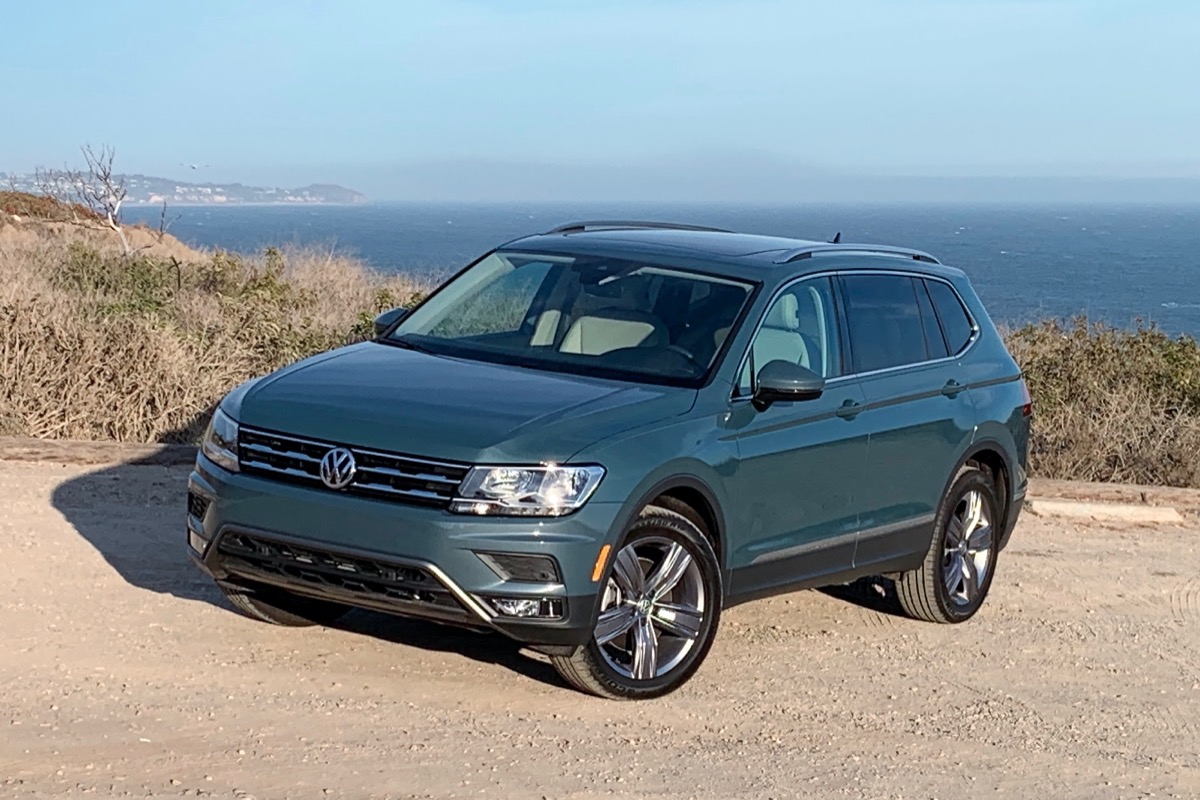
According to CarGurus experts, the overall rating for the 2021 Hyundai Kona is 7.2 out of 10, while the 2021 Volkswagen Tiguan scores 7.3 out of 10. Based on these ratings, the 2021 Volkswagen Tiguan is the better choice, offering a more spacious interior, advanced technology, and a comprehensive suite of safety features.
Choose the 2021 Hyundai Kona if:
Shop Now- You prefer a playful and unique exterior design.
- You value a well-organized and intuitive interior layout.
- You seek a small SUV with engaging and agile handling.
Choose the 2021 Volkswagen Tiguan if:
Shop Now- You need a roomy and accommodating interior with optional third-row seating.
- You appreciate a conservative, upscale, and timeless exterior design.
- You want advanced technology and a comprehensive suite of safety features.

By: CarGurus + AI
At CarGurus, our team of experienced automotive writers remain at the heart of our content operation, conducting hands-on car tests and writing insightful guides that are backed by years of industry experience. To complement this, we are harnessing AI to make our content offering more diverse and more helpful to shoppers than ever. To achieve this, our AI systems are based exclusively on CarGurus content, ratings and data, so that what we produce is both unique to CarGurus, and uniquely helpful to car shoppers.

















